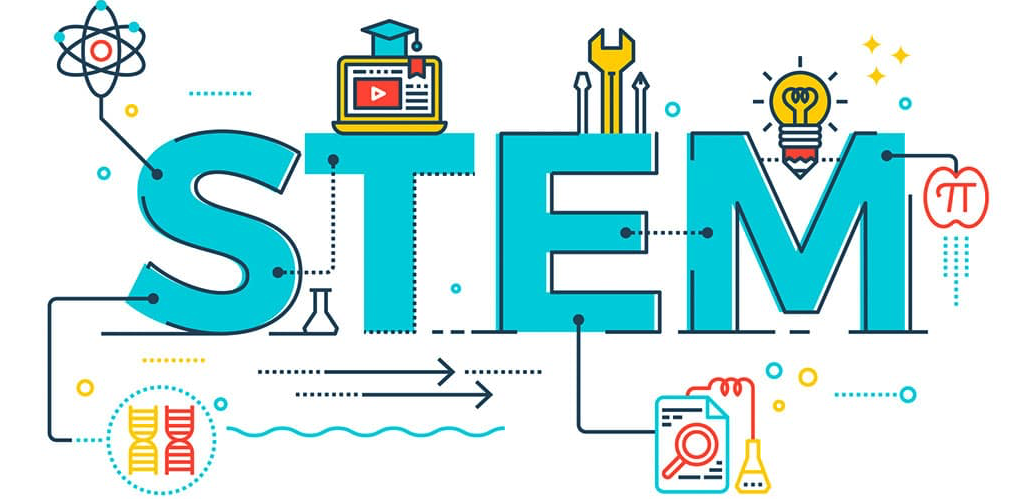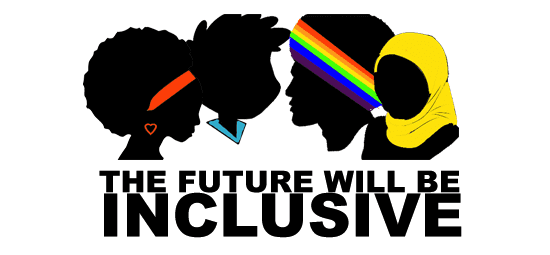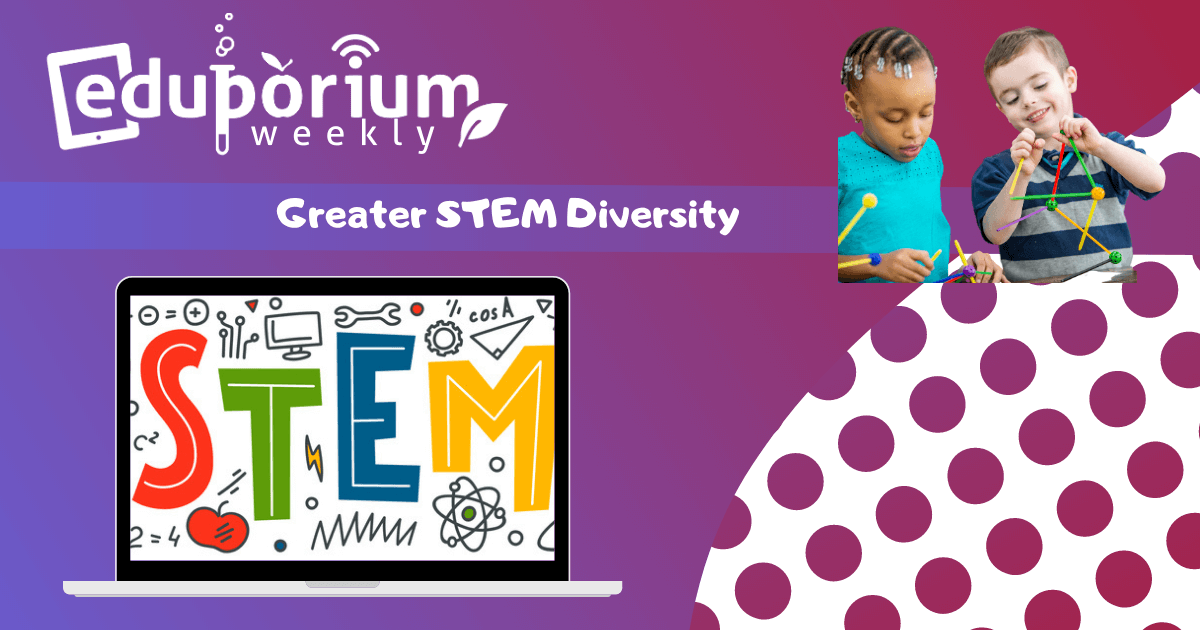Like many others, we’ve learned a lot about what it takes to embody and advance diversity in professional and educational settings as well as throughout the community in general. While diversity is something that we should certainly be celebrating, we’ve also learned that simply hoping to create diversity is not enough. Diversity thrives when we all spread it using intentional messages that help to elevate all thoughts, talents, experiences, and opinions of everyone. We're also aware that there isn't as much diversity throughout the STEAM world as we'd like. So, we’re continuing to promote the importance of diversity in STEM, helping others embrace it, and learning to maximize it.
Why Diversity Matters in STEM
Diversity matters in all places and in all industries, but it’s a focal point in STEM and technology industries. Typically, we understand diversity as referring to different things or having variety in how they're portrayed. Diversity implies differences among each one of us and, even when we are separated into different groups, it still exists. Also, diversity only comes into play when groups of people come together. In other words, an individual person cannot be diverse. For everyone to fully embrace diversity, we must understand that the different traits that make each person unique are also connected to diversity itself, including race, religion, ethnicity, gender, sexual orientation, and disability status.
In STEM professions, diversity comes into play when company leaders search for and cultivate talent and share notable achievements. Many times, company employees will include mixtures of people from various backgrounds who might be traditionally underrepresented across STEM professions and those who might be better represented. It’s that resulting diversity from this mixture that’s important to company leaders and to the overall success of a company. In general, scientific discoveries and breakthroughs aren't typically up to just one person. They're often team accomplishments—a small group or a bigger one—with people who may have greatly diverse viewpoints. These differing viewpoints and skill sets often help ensure nothing is overlooked and that creative problem solving is the priority.
With all the collaboration in modern STEM professions, all diverse backgrounds of people on teams can be super valuable. People from different social backgrounds have obviously had different life experiences. Any people from similar social backgrounds, however, may also have varied life experiences that can help drive success. Too little diversity within a STEM organization can also lead to lost opportunities for individual and company growth and success. Enhancing diversity and diverse employee perspectives is key in cultivating long-term success and an employee-friendly culture. While diversity often refers to the differences each of us has, diversity in the world of technology and science often involves discovering the right mix of people, helping them cultivate their talents, and promoting full inclusion at all levels.
How People Feel About Diversity in STEM
That is a pretty good question. How do people feel about diversity in these STEM industries? And, do they even think about it? Well, it all depends on who you ask. You might think that white people would consider diversity to be less important than Black people and, to some extent, that may be true—at least according to this research from the Pew Research Center. According to various surveys, Black workers in STEAM companies feel that workplace diversity is more important than many white counterparts and they’re much more likely to feel that there isn't enough racial diversity in their place of work than their white counterparts. It’s not even that they feel discriminated against—that could certainly still be happening, but that is not the focus. It’s just that they won’t always feel everyone is noticing the same slights or gaps between people of different backgrounds.
Knowing underrepresentation within STEM is common, this can be why Black people shy away from what could be lucrative careers. They also might not feel like they’re qualified or talented enough to be taken as seriously as others at all times. This is a problem that may stem from the education experiences they have throughout their lives. The problem of unequal access to quality STEM education, hands-on experiences, internships, or college scholarships can sometimes contribute to more Black people missing out on STEM career opportunities. In fact, according to the article, about half of STEM professionals believe this lack of access to high-quality education is a major reason for underrepresentation in the STEM fields. Whether or not this lack of mentorship is a factor, it’s certainly something we could collectively improve.
As for those who do secure an offer in a STEM field, that's not always the end of their struggle. Rather than celebrating diversity, over half of Black STEAM professionals have felt discrimination at times, believing it's based on race. Of course, this can often result in decreased morale, poorer performance, delayed success, and, ultimately, many people leaving the field. Additionally, the writer stated that one in five STEM workers who believed their race hampered their success indicated that the ways in which co-workers treated them was the largest factor. The way we all treat peers is 100 percent something we can control and embracing diversity is the No. 1 way to celebrate differences rather than using them to create distance.

The Importance of Diversity in STEM
We can reference statistics on white people comprising the majority of STEAM professionals but that’s not really our message. It is also logical that, if a country has more white people than Black people, then these figures make sense. However, even if there are fewer black people as well as people of other ethnicities as STEM professionals than there are white people, those with lower levels of representation still need to feel welcomed, valued, and included. But, this isn’t always the case. People from other parts of the world and other cultures even within our own country come from different experiences. They often assess problems differently and they may also identify issues in unique ways. Bringing in these different points of view and intricacies to problem solving and team success is crucial in STEM environments.
In professional STEM environments—like in any professional environment—employees from any different backgrounds can learn from each other. They should also look for opportunities to do so rather than avoid getting to know new perspectives. People from various cultures possess different types of resourcefulness and ways of problem solving whether that’s drawing on past experiences, employing the scientific method, or developing a stronger team chemistry with various elements that work. In STEAM roles, it’s important to understand reasons behind why they can solve a problem instead of simply finding solutions. They say the journey's more important than the destination and this is a great time to remember just that. Spreading the word about the importance and value of diverse perspectives is the best thing leaders and employees can do. That's how we start ensuring that everyone hears and shares different points of view.
Diversity in STEAM fields shouldn’t only include racial diversity, but also gender, ethnic, geographical, and socioeconomic diversity. Welcoming people from different groups helps everyone create a more favorable environment and can even show prospective future members of the STEM workforce—like college or high school students—that knowledge about the importance of diversity does exist. Not only could this bolster their confidence about a STEAM future, it could help them see the importance of contributing. Essentially, promoting diversity in STEAM works both ways, helping minority members to feel welcomed and helping majority members learn why it is so important to create an inclusive environment. Simply acknowledging that we can do something is one way to move past the disparity in STEM.
Addressing the Culture in STEM Industries
Even preceding the events of 2020, advocates committed so much time and money into shifting patterns and fostering STEM diversity. Though progress is evident, in the grand scheme, the percentage of BIPOC adults in STEM still remains low. According to information in Higher Ed Today, of all the Black, Latino, and Native American students who enter college majoring in STEAM fields, only 16 percent of them will go on to get a degree in that field, leaving a steady disparity in the STEAM workforce. While it's discouraging to think about a lack of progress, we can do more to understand why this is. Rather than trying to solve this problem by forcing more minority members into STEM, we are better off re-evaluating some approaches. It's best to start working to eliminate behaviors, traditions, and norms that might be exclusionary.
Those ‘norms’ are typically values or behaviors that have permeated a group, a company, or even an entire industry. It could be something as simple as not quitting until the job's done or never working past 5 PM. In this case, success in STEM careers is often seen as more likely if new team members adopt certain values. If they’re adopting the wrong values, however, it could create exclusions or unintended biases. For those of them who might not find themselves in the majority, striving for total inclusion is sometimes the unfortunate norm. Working toward full inclusion often begins with regularly conversing with peers, participating in group projects, and even spending time together outside of work—all of which can foster greater togetherness. In making these efforts, people tend to develop a deeper understanding of each other and go on to use these connections—and their differences—moving forward.
Teaching students how to adapt to a culture that might not be totally inclusive isn’t the best solution. That’s partly because telling them this in high school or college could shy them away from a career in STEM. It is much more practical, in our opinion, to avoid fostering these types of environments and help those who are already a part of them recognize behaviors that contribute to it. People might show their lack of a desire for diversity unintentionally and must know that this is harmful and why. It comes back to not being fully aware of people from other backgrounds or being in tune with different cultures. Addressing crucial problems and providing actionable alternatives is the best way to create a culture that’s as inclusive as possible.

Moving Towards More Diversity in STEM
Whether it's with college students majoring in STEAM fields or working professionals, we can always work towards improving diversity. Paying close attention to some habits and apprehensions of people new to an industry is a good starting point. Helping to model positive examples of inclusion can also go a long way in creating the right environments. Even though a minority member may feel like they truly belong in society in general (hopefully all do), they might not feel fully accepted within their company and also their direct team. Obviously, nobody should want this and everybody should do enough so everybody, especially people who are traditionally underrepresented, feels valued. In all honesty, we’ve reached a point at which passively not being inclusive isn’t all that acceptable, leading to more efforts for active inclusion.
The experiences of minority members in STEM fields can potentially align with the experiences they’ve had in the past. They may feel discriminated against, ostracized, and not truly accepted by the general group of peers with whom they work. Since the STEM industry thrives on diversity and diverse opinions, it is not like the presence of people with different backgrounds is going away—nor should anybody ever want it to—but it also, unfortunately, means that issues with feeling unwelcome may happen. In order to try avoiding some issues, everybody first needs to educate themselves. This includes company executives and employees at all levels. Everyone must understand how a company's climate looks to people from different backgrounds and how it could be contributing to retaining employees in the short and long term.
Next, employees must understand the culture that’s emerged throughout STEM—whether intentionally or unintentionally—and pinpoint problematic values. This could help them identify areas in which some of the industry’s minority members might feel marginalized. From there, everyone could work together to develop some comprehensive initiatives that ensure everyone feels included. This often ranges from professional to personal support and is based on first-hand suggestions from anyone who could offer insights. Finally, it is key to acknowledge that anybody can transmit certain vibes and behaviors. Even the most subtle acts can be offensive or make others feel uncomfortable. Remember, STEM professionals should see their diversity as an opportunity—not something they have to think could create issues.
For the latest EdTech, STEM, and 21st century education news, follow us on Twitter and Instagram. Like us on Facebook, too, or sign up for our newsletter for our latest product announcements and offerings. If you have an idea for an Eduporium Weekly theme, send us a message on social media or comment below.



